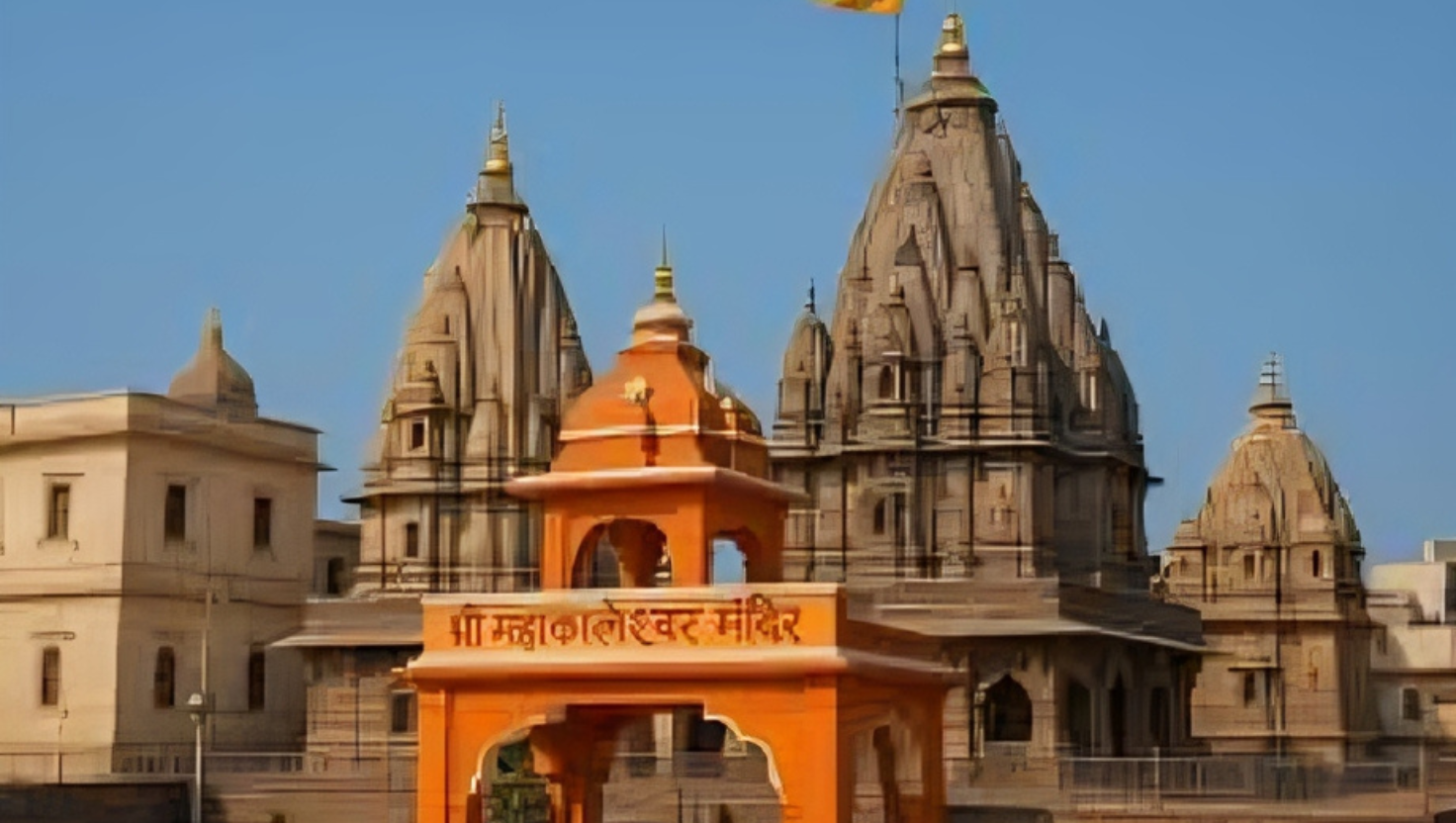Introduction
Mahakaleshwar Temple, located in the holy city of Ujjain on the banks of the Kshipra River, is one of the twelve Jyotirlingas of Lord Shiva. Millions of devotees visit every year for its spiritual power, unique rituals and rich history. This guide covers history, architecture, the famous Bhasma Aarti, how to reach the temple, timings, nearby attractions and practical tips.
History & Significance
According to Hindu tradition, Lord Shiva manifested here as Mahakal — the Lord of Time — to protect devotees. The temple is mentioned in several Puranic texts and is unique among Jyotirlingas because the main lingam is believed to be swayambhu (self-manifested) and faces south, symbolizing Shiva as the ruler of death and time.
Architecture
Mahakaleshwar reflects a mix of Bhumija, Maratha and Chalukya styles. The complex features a tall shikhara, ornate carvings, silver-plated doors and multiple levels. The sanctum (Garbhagriha) sits partially below ground level and the complex hosts shrines to other deities like Ganesh, Parvati and Nandi.
The Sacred Bhasma Aarti
The Bhasma Aarti is the temple’s most distinctive ritual — performed early in the morning when the Shivlinga is adorned with sacred ash. This ash symbolizes impermanence and Lord Shiva’s role as destroyer and regenerator. Many devotees consider attending this a once-in-a-lifetime experience.
Note: Attendance rules may include advance registration, traditional dress (men: dhoti; women: saree) and limited entry during festivals.
How to Reach Mahakaleshwar
By Air
Nearest airport: Devi Ahilya Bai Holkar Airport, Indore (~55 km). From Indore, taxis and buses connect to Ujjain.
By Train
Ujjain Junction is well-connected with major cities (Delhi, Mumbai, Bhopal, Varanasi). The temple is about 2 km from the station.
By Road
Ujjain has regular state and private buses from nearby cities: Indore (~55 km), Bhopal (~190 km), Ahmedabad (~390 km). Taxis and private vehicles are convenient.
Local Transport
Auto-rickshaws, cycle-rickshaws and taxis are available locally. Walking inside the heritage areas is often the fastest way to move between ghats and temples.
Best Time to Visit
Ujjain’s ideal visiting months are October to March when the weather is pleasant. Major festive moments to plan for:
- Mahashivratri (Feb/Mar) — grand celebrations
- Shravan month (Jul–Aug) — special observances for Shiva devotees
- Nag Panchami — religious significance linked to Shiva
Temple Timings (Typical)
| Ritual / Slot | Typical Time |
|---|---|
| Bhasma Aarti (Morning) | ~4:00 AM |
| Temple Opens | 3:00 AM – 11:00 PM |
| Evening Aarti | ~7:00 PM |
Timings change during festivals — check official temple sources or local notices before visiting.
Accommodation
Options range from temple-run rest houses to mid-range hotels and luxury resorts. Examples:
- Mahakal Sadan — temple guest facility close to the complex
- Hotel Shipra Residency — comfortable mid-range stay near Kshipra River
- Anjushree Resort — higher-end option a few kilometers away
Book in advance during Mahashivratri and Shravan.
Places to Visit Nearby
- Kal Bhairav Temple — fierce form of Shiva
- Harsiddhi Temple — one of 51 Shaktipeeths
- Ram Ghat — evening aarti on the Kshipra banks
- Sandipani Ashram — associated with Krishna’s education
- Vedh Shala (Observatory) — historic astronomical observatory
Practical Travel Tips
- Try to attend the Bhasma Aarti — it’s unique and powerful.
- Dress modestly; follow temple rules and respect customs.
- Keep valuables secure and avoid carrying unnecessary items inside the sanctum.
- Book accommodation early during festivals.
- Be patient — queues can be long during peak season; maintain decorum and silence inside the sanctum.
Conclusion
Visiting Mahakaleshwar Temple is both a spiritual journey and an encounter with India’s living heritage. Whether you seek blessings, architectural beauty or a deep cultural experience, Mahakal’s presence in Ujjain leaves a lasting impression. Plan your trip, respect local traditions and carry home the peace and divine energy of Mahakal.
Back to top
